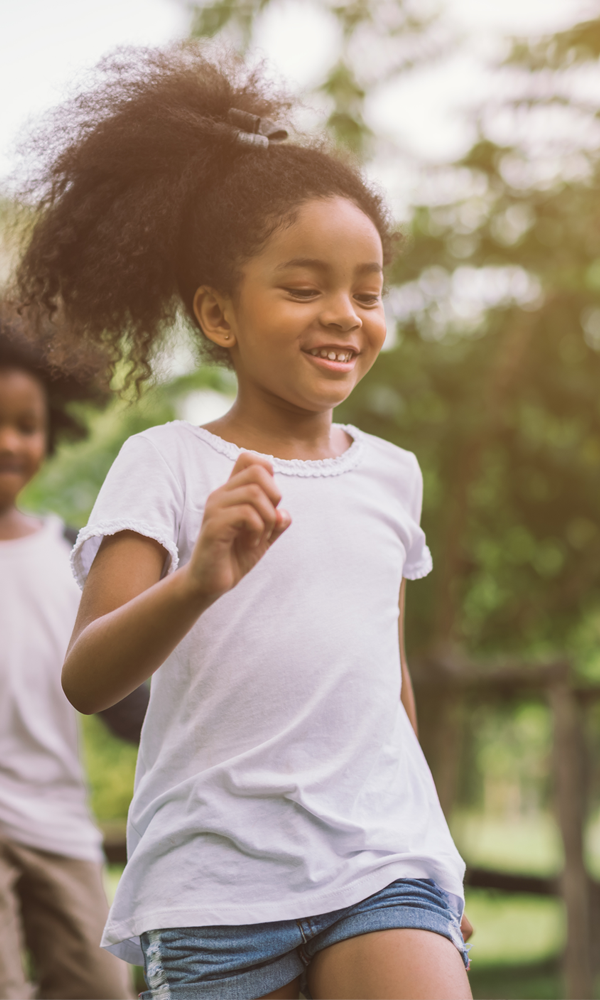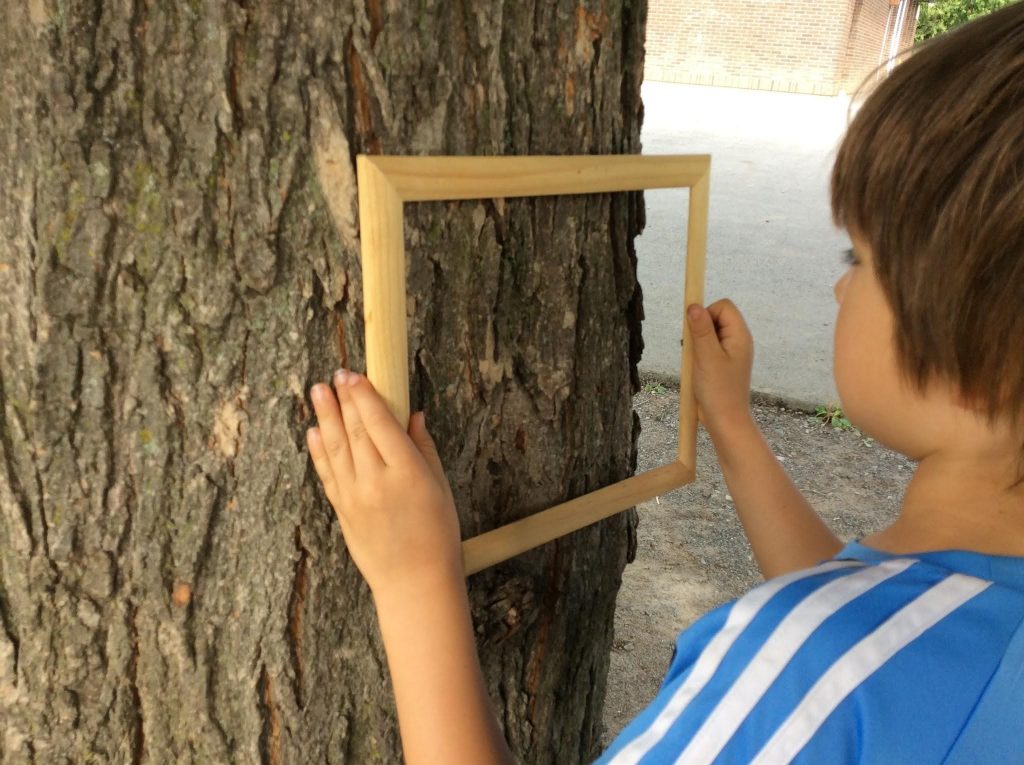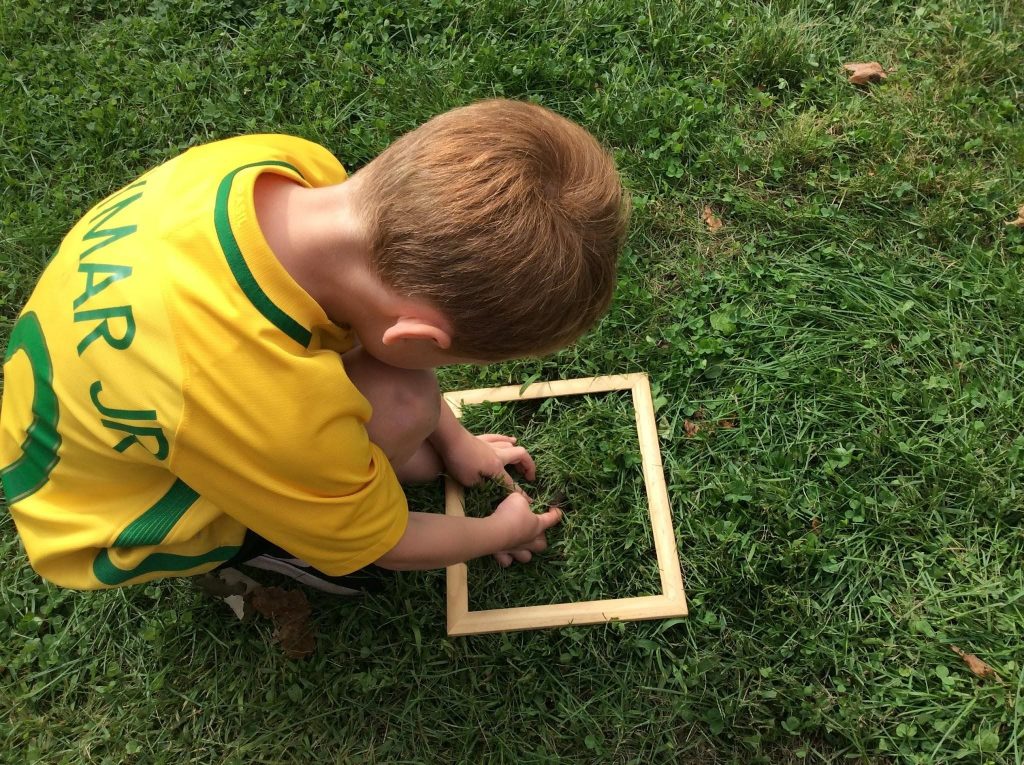This set of mindfulness activities is designed to connect students with the natural world and connect them to it in a place that is of significance and meaning to them, the schoolyard.

Grade level: 1-6
Learning Objective:
– To connect with the natural world using the senses
In this activity, students will:
– Use their senses to see, hear, smell, and touch items found in the natural world
– Practice mindfulness as a way to connect to the natural world
Materials: Empty picture frames or small hoop
Eco-anxiety has never been higher among students than today. The news and social media feeds are filled with stories of doom and gloom about the environment; the forests are burning, the sea levels are rising, and the climate is changing. Students may feel powerless to do anything about large scale issues happening in faraway places.
A first step in empowering students to take eco-action is to connect them to the natural world. David Sobel has said: “If we want children to flourish, to become truly empowered, let us allow them to love the Earth before we ask them to save it.” The following of mindfulness activities have been designed to do just that.
Start it up
FOCUS THE NOTICING
- Bring students to meet at a designated meeting point on the schoolyard.
- Review any safety guidelines that have been pre-established when taking the class outside (e.g., make sure you can see the teacher, come back to the meeting point when called back, etc.). This activity will require students to walk around the yard. Having a set of predetermined “stops” on the walk can provide much needed structure to an open-ended activity and can be revisited on subsequent visits.
- Invite students to walk around the yard, holding an empty picture frame. If you do not have empty picture frames, consider fashioning a loop out of pipe cleaners or using a small hoop.
- Ask them: “What do you notice?” The use of a frame can help focus their noticing.



(Photo credit: Jacqueline Whelan)
- After exploring the yard, return to the meeting point and invite students to share what they noticed.
Set it up
FIRST STEPS INTO MINDFUL NOTICING
- Find a quiet corner of the schoolyard.
- Invite the students to sit or stand in a circle, depending on their comfort level on the yard.
- Explain: “Today, we are going to notice our surroundings.
- When I say “blue jay”, we are going to turn around, face away from the circle, and look with our eyes.
- You will have 1 minute to notice with your eyes what is around you.
- When I “caw” like a blue jay, you will turn back in towards the inside of the circle.”.
- Afterwards, invite students to share what they noticed with the group. Be sure to emphasize the difference between the built and natural environments.
NOTICING THE NATURAL WORLD
- Repeat the activity, this time, prompt students to focus solely on the natural environment.
- At some point, a student may notice another student or adult. It is important to emphasize that humans are part of the natural environment: “We are nature! Nature is part of us”.
Keep it up
MINDFULNESS AND THE SENSES
On following visits to the school yard, repeat the above activity, changing the prompts:
- Invite students to notice with their ears sounds around them: first any sounds, then sounds coming from the natural world. Students may wish to close their eyes if they are comfortable.
- Invite students to notice with their noses, smelling their surroundings.
- Invite students to notice with their fingers what might be within arm’s reach. Students may respond: “Nothing but grass!”. This answer provides a great opportunity to explore the diversity of plants growing on a typical school yard.
SUPERLATIVES
During a series of visits to the school yard, invite students to notice opposites in the natural environment:
- What is the biggest thing you can see? What is the smallest thing you can see?
- What is the loudest sound you can hear? What is the softest sound?
- What is the sourest smell you can smell? What is the sweetest smell?
- What is the roughest object you can touch within arm’s reach? What is the softest?
Resources
Earth Rangers is committed to helping kids manage eco-anxiety. That is why Earth Rangers and Ipsos Canada undertook two research studies to capture attitudes and actions around environmental issues by children (ages 6-11) and their parents. One of the key results are the was the 5 E’s to drive eco-action, which is a useful framework for thinking about inspiring kids to take eco-action.
Eco-Anxiety Educator Guide: This short guide introduces the 5 E’s to drive eco-action and provides examples relevant to the classroom.
Inspiring Eco-Action through Storytelling: Stories are one way to show students that it is possible to make a difference. This activity includes a list of suggested stories for different grade levels.
Earth Rangers Eco-Anxiety to Eco-Action Micro credential for Educators
